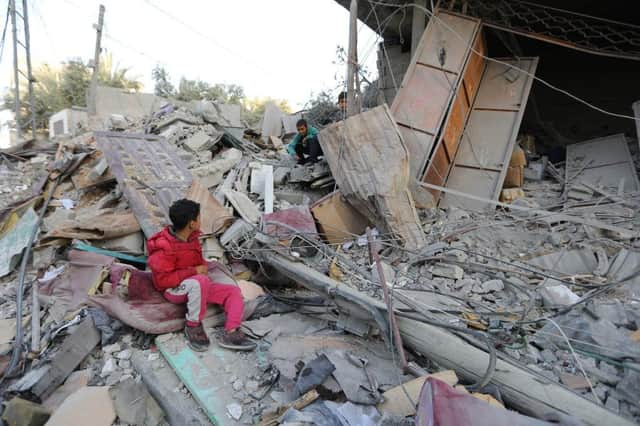World explained: Six months into Israel's war with Gaza, there is no end in sight


This weekend marks six months since the day Hamas militants stormed Israeli border fences and launched an unprecedented attack on communities there.
The horror of the assault was unquestionable. I spoke to people whose family members were trapped in a safe room in a kibbutz near the Gazan border for 36 hours – who heard atrocities committed outside of their home and ultimately lost a close family member. Other stories, of the young people kidnapped from a music festival and taken to Gaza, where some of them are still being held, are every parent’s nightmare.
Advertisement
Hide AdAdvertisement
Hide AdHowever, few could have anticipated the scale of the retaliatory attacks Israel has since carried out in Gaza.
The territory has essentially been decimated. Buildings have been reduced to rubble and it is estimated that just 300,000 people, out of a population of two million, have not been displaced from their homes.
Many are living in the open air, or in tent-like temporary structures, the vast majority of them crushed into a tiny corner of Gaza ear the Egyptian border, which is currently the subject of its own series of heavy bombardments by the Israeli military.
Huge amounts of aid has been unable to reach Gaza. Blocks on convoys travelling through the usual routes via Israel have meant Rafah, the border with Egypt, is the only possible way for humanitarian supplies to access the territory. Yet even there, there have been problems.
This week’s attack on a convoy which killed seven staff from World Central Kitchen, a food aid charity providing hot meals for Gazan refugees, has made humanitarian organisations even more nervous. Now, they believe, they are not only operating in a dangerous zone, but they are potentially targets.
Israel has taken responsibility for the attacks, saying it was a “grave mistake”, however, some, including the charity itself, as well as research group Human Rights Watch, which said the hit “displays the characteristics of a precision airstrike”, have claimed the attack was planned.
Few believe there is an end in sight to this conflict. Attempts at brokering a ceasefire have been largely unsuccessful. A humanitarian “pause” at the end of last year was short lived and any more significant agreements between Gaza and Israel seem unlikely.
Within Israel, appetite for the war appears to be waning, with protests against Benjamin Netanyahu’s government breaking out in many cities last weekend. But the Israeli government is insistent that it will not budge in its aim of entirely stamping out Hamas in Gaza.
Advertisement
Hide AdAdvertisement
Hide AdWe know from the situation in Ukraine that conflicts can go on beyond initial expectations. Indeed, we can take lessons from the First World War, which was touted widely to be “over by Christmas”, but lasted for four years.
Israel has not yet achieved its aim - to stamp out Hamas in Gaza - and it will not stop until it feels it has done so. Hamas, arguably, has been successful in putting the Palestinian question firmly back into international discussion - but it has resulted in a decimated Gaza which will take decades to rebuild. No-one is a winner.
How the conflict can continue at this level is anyone’s guess. People are starving, hundreds are dying every day. Another six months is unsustainable.
Comments
Want to join the conversation? Please or to comment on this article.
